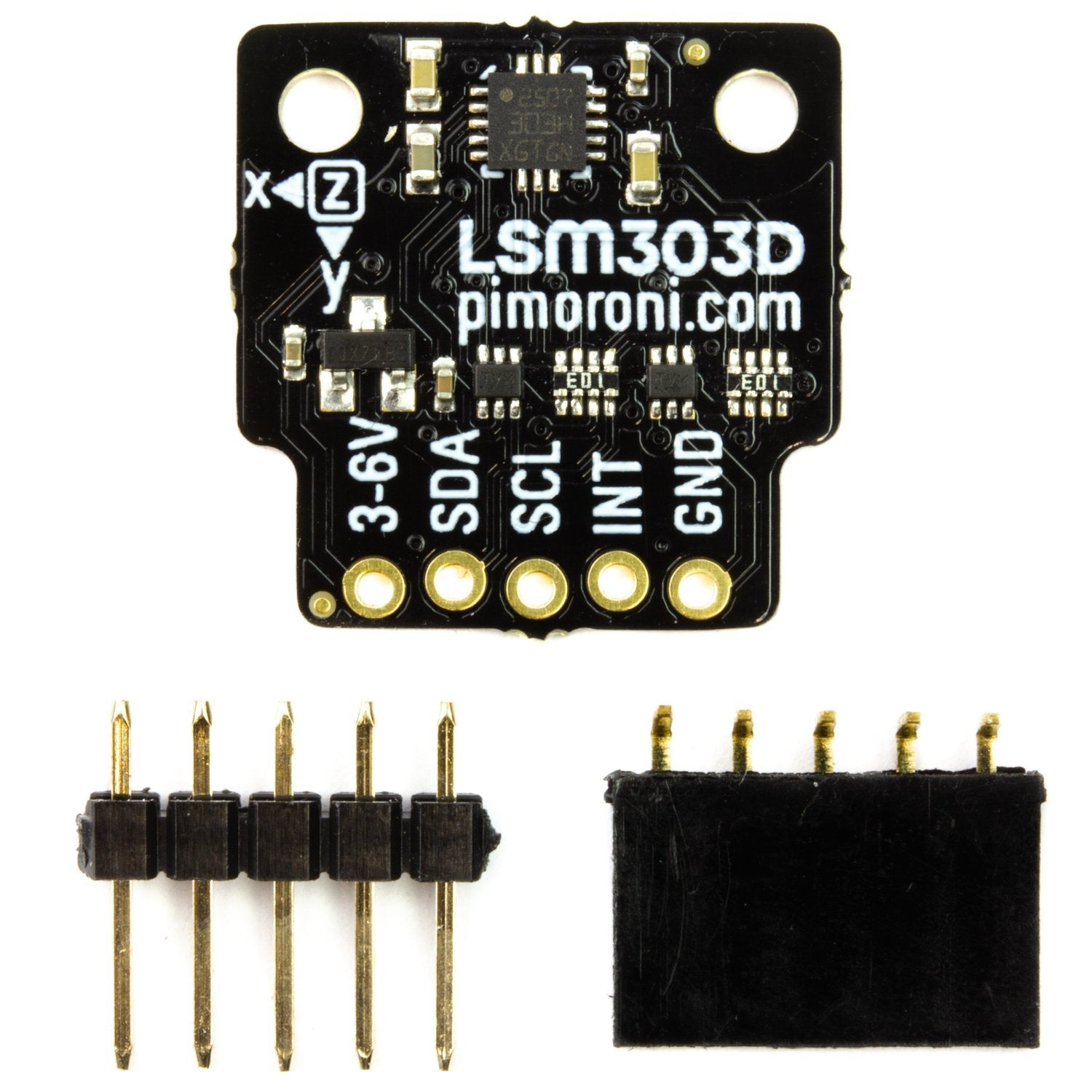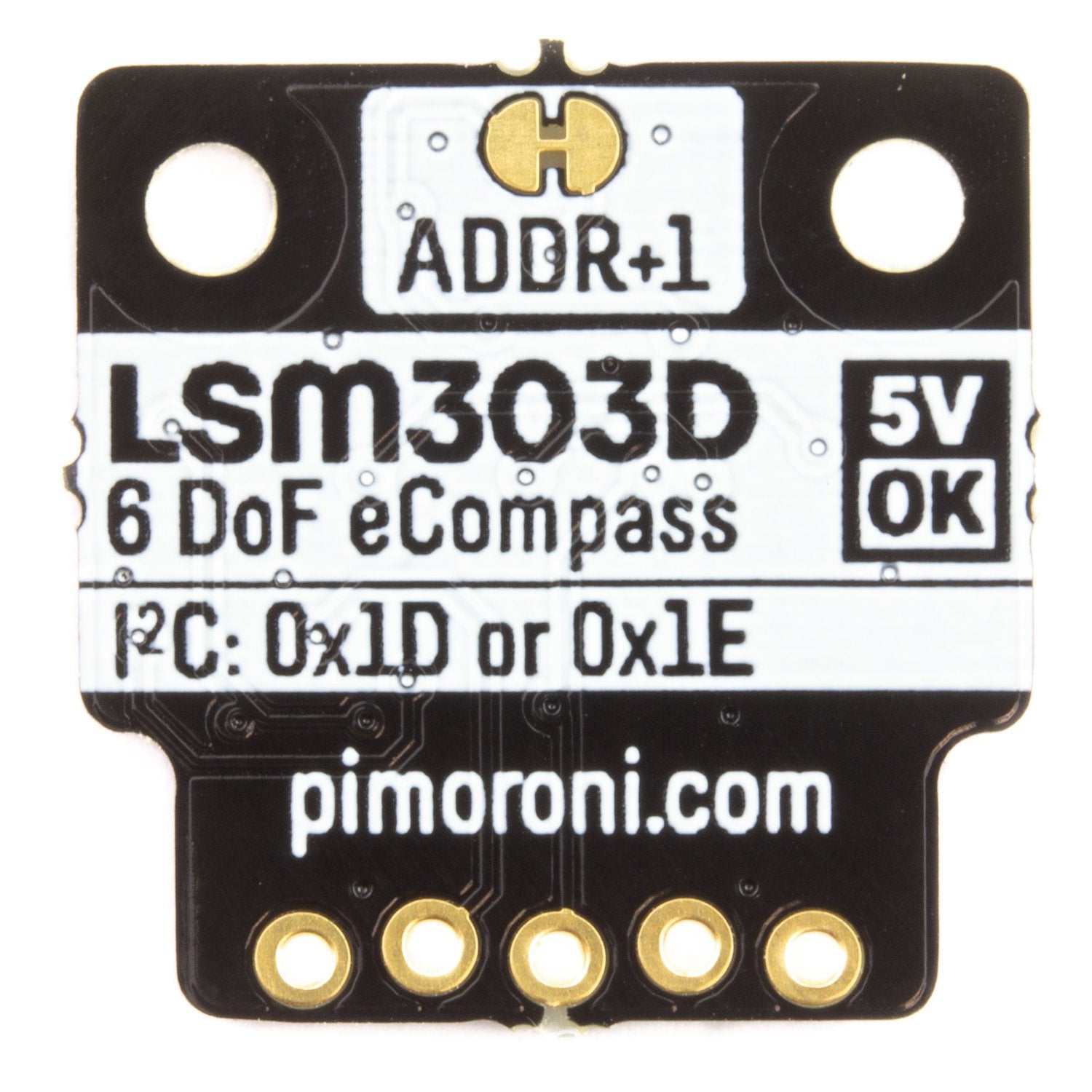This amazing 6 Degrees of Freedom Motion Sensor Breakout is a game - changer. It can precisely detect acceleration in the X, Y, and Z axes and magnetic heading in three axes too. It's a perfect fit for robots, rockets, rovers, or any place where accurate motion measurement is needed. It works great with Raspberry Pi or Arduino.
The LSM303D 6DoF Breakout features an I2C interface and is compatible with both 3.3V and 5V. Similar to other Pimoroni breakouts, you can solder a right - angle header on it and directly attach it to the bottom - left 5 pins of your Raspberry Pi's GPIO header (pins 1, 3, 5, 6, 9).
It also pairs well with our new Breakout Garden. You just pop it into one of the six slots and start building your project, creating, and coding easily.
### Features
- LSM303D 6DoF Motion Sensor
- Adjustable magnetic scale from ±2 to ±12 gauss
- Linear acceleration options from ±2 to ±16 g
- 16 - bit data output
- 3.3V or 5V compatibility
- I2C interface with address select via ADDR cuttable trace (0x1D or 0x1E)
- Reverse polarity protection
- Raspberry Pi - compatible pinout (pins 1, 3, 5, 7, 9)
- Works with Raspberry Pi 3B+, 3, 2, B+, A+, Zero, and Zero W
- Comes with a Python library and datasheet
### Kit includes
- LSM303D 6DoF Motion Sensor Breakout
- 1x5 male header
- 1x5 female right - angle header
### Software
We've developed a Python library for reading data from your LSM303D 6DoF Breakout, along with an easy one - line installer. Note that our software doesn't support Raspbian Wheezy.
### Notes
You can carefully cut the trace between the solder pads (marked ADDR) with a craft knife to change the I2C address from the default 0x1D to 0x1E. This allows you to use up to two sensors on the same Raspberry Pi or Arduino. You can also bridge the pads by soldering to reset the address to 0x1D.


Using this LSM303D 6DoF Motion Sensor Breakout is straightforward. First, if you're using it with a Raspberry Pi, solder a right - angle header onto the breakout and then attach it to the bottom - left 5 pins of the GPIO header. For the Breakout Garden, just pop the sensor into one of the six slots.
When it comes to software, use the provided Python library. You can install everything with the one - line installer. But remember, it won't work with Raspbian Wheezy.
For adjusting the I2C address, if you want to use two sensors on the same device, carefully cut the trace marked ADDR with a craft knife to change the address from 0x1D to 0x1E. If you need to reset it, solder the pads together.
In terms of maintenance, keep it away from excessive moisture and physical damage. If you're not using it for a long time, store it in a dry and cool place. Make sure to handle it gently to avoid any damage to the components.